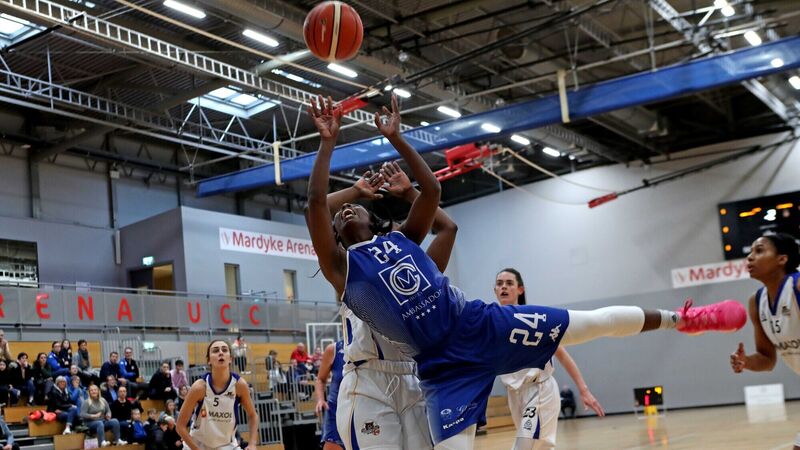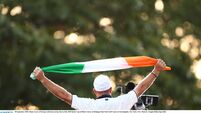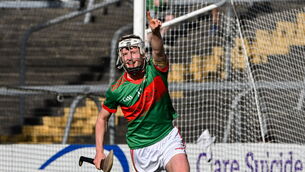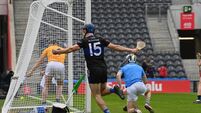Kieran Shannon: Basketball's tough task getting back on court

Shrita Parker, UCC Glanmire, in action against Maxol WIT Wildcats at the Mardyke Arena last year. Picture: Jim Coughlan.
Probably more than any other team sport widely played and coached in this country, basketball has quite the tradition and tendency to plan for special situations. What will we run if we’re three down with four seconds to go with an inbounds ball under their basket? What will we do if the opposition press us full court?
Long before Jim Gavin spoke about ‘war gaming’, hoops coaches from Blarney Street in Cork to the Falls Road up north, from the schoolyards of Ballina to the churchyards of Dublin, have been well versed in the art of scenario planning.
This season more than any other before though will demand that basketball people, especially those administering and coaching it, will have to exhibit a quality that Gavin liked for his teams to be: agile.
How do we keep kids involved in the sport now that they can no longer train indoors in pods with the whole country at Level 3? What happens to the national leagues, due to tip off this weekend, if the country as expected at goes to Level 5 at some stage? Having just the one plan or play isn’t enough. Like a good offence, you have to have multiple variations and options while all the time reading what’s right in front of you.
Before a ball has been thrown up in it, the men’s Superleague, even with its elite status, has been impacted. Reigning champions, Belfast Star, have just been granted a three-week derogation in light of the alarming Covid numbers up north; while they were initially scheduled to play UCD Marian, Griffith College Templeogue, and Killester this month, their first game now – fingers crossed – will be on November 7 against DBS Éanna.
Similarly, this weekend’s women’s Division One northern conference game between LYIT Donegal and Phoenix Rockets from Belfast has been postponed. This is what the new normal looks like.
“The season is going to be very different to a normal season,” admits Basketball Ireland chief executive Bernard O’Byrne.
“There will be hiccups and challenges. But people are so determined, not just to play and have games but to do it properly.”
He’s seeing it as well at the non-elite level. Some smaller clubs alright have postponed their activity for the entire season, and there will always be a fear that a few may not return. But even with teams no longer able to train in pods of six indoors, now that we’ve moved beyond Level 2, clubs are finding a way.
“I think it will be exceptional if a club is doing nothing at the moment,” says O’Byrne. “Most clubs appear to be doing something within their own bubbles.”
At a time of year when children normally move from the outdoors to the indoors to play their sport, clubs and coaches are finding themselves reverting to how things were done a couple of generations ago, back playing outdoors — albeit non-contact only, in line with Level 3 and 4 restrictions.
Almost all the great clubs in the country started in the great outdoors, usually the property of a school or a religious order. Even when the Americans arrived in the early 80s to provide some glitz and glam to the sport and Irish life in general, the conditions they at least trained in could be still rudimentary; Terry Strickland’s first training session with Neptune took place on the old Cathedral school courtyard where he had to dribble between puddles.
But such conditions were possibly the making of the great team he played on; generations of Neptune players have been reared on hearing about how legends like Tom O’Sullivan, Paul Kelly, and Brendan O’Flaherty as kids used to sprinkle any frozen court with salt and scrub with their toothbrushes believing it accelerated the thawing process. Now a new generation of players peppered around the country could have similar tales of resilience and ingenuity to hear and tell.
Some indoor training is still allowed, and not just to teams – ie. National league and international sides – who have elite status.
O’Byrne maintains that after seeking further clarity from Sports Ireland and the government, “individual training”, which is permitted under Level 3 and Level 4 regulations, isn’t just confined to one kid and one basketball in a hall; instead it allows for up to 12 players to train indoors at a time if the hall is big enough, so long as there is no interaction between them and they at all times remain two metres apart from one another.
A number of hoopsters around the country have highlighted a few other anomalies. How it’s okay for national league teams to scrimmage among themselves at Level 4 when non-elite teams can’t even do that at Level 2?
But O’Byrne finds there’s an appreciation that under the current circumstances, like with every other sport now, some have to be more equal than others.
“We’re making submissions all the time through the Federation of Irish Sport and helped with the establishment of an indoor sports special group representing 20 sports, but I’d be reluctant to be critical of the government or NPHET because they have so much to do. We have tried to make the case to increase the numbers in pods but they’re very insistent that six is the number and we’ve to respect that.
“And likewise I think there is an acceptance in the basketball community that there has to be a difference between elite level and local level basketball because of the numbers involved. While everyone is itching to get back playing, I think overall people are being very responsible and are not looking for any shortcuts or loopholes.”
Under Level 3 restrictions, the only games allowed are at national league level. Different area boards will start their games at different times. Some will be looking to restart in November should we fall back to Level 2. Some areas, like Kerry, decided as early as August not to start until January. But this weekend the national leagues will start all across the country.
There are likely to be disruptions, or “hiccups”, as O’Byrne calls them. For one season only — it’s only a temporary measure, O’Byrne insists — the leagues are being on a conference basis: one north, one south, limiting the travel involved for teams and increasing the option of playing games in midweek should the league have to stall for a period.
At Level 5, all basketball, even at Superleague level, has to cease. There is a determination though to finish the men’s league — and most likely the women’s too — by the end of March, even if it means shaving a couple of games off the schedule.
No crowds means no gates for teams, even though they’ll have Americans and some other professionals on their roster, but to help generate some income for clubs, games will be available on a streaming subscription service provided by Joymo; followers of the league will have the option to purchase a season pass or just pay per view.
There will be other challenges for clubs who reside away from the cameras and the national league. Keeping players and kids in the sport. What should have been a year of celebration for the sport here — 2020 marks the 75th anniversary of the national governing body — will be among its most testing. But if the history of the sport tells us anything, it is that basketball people tend to war game and find a way.
Toothbrushes at the ready…








